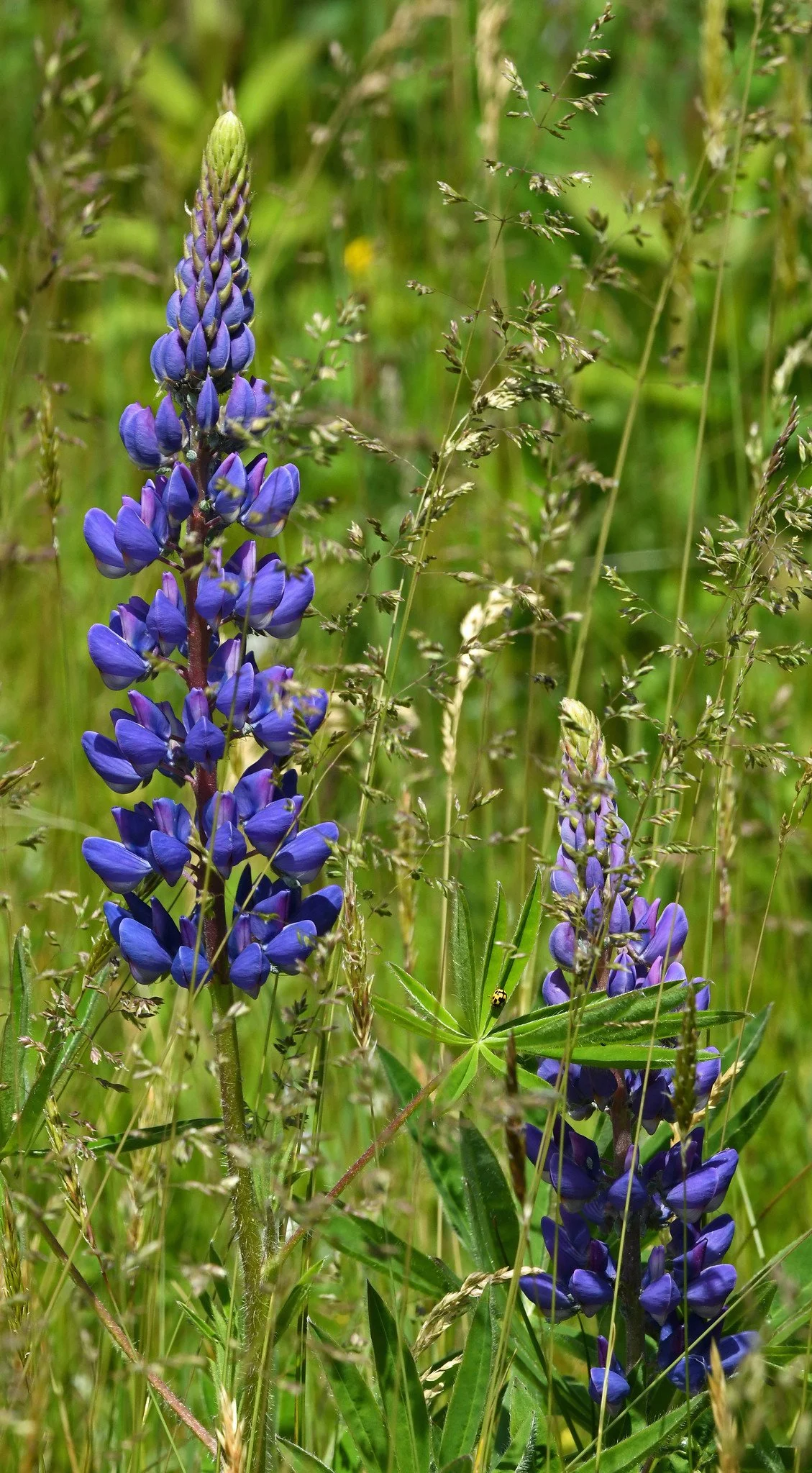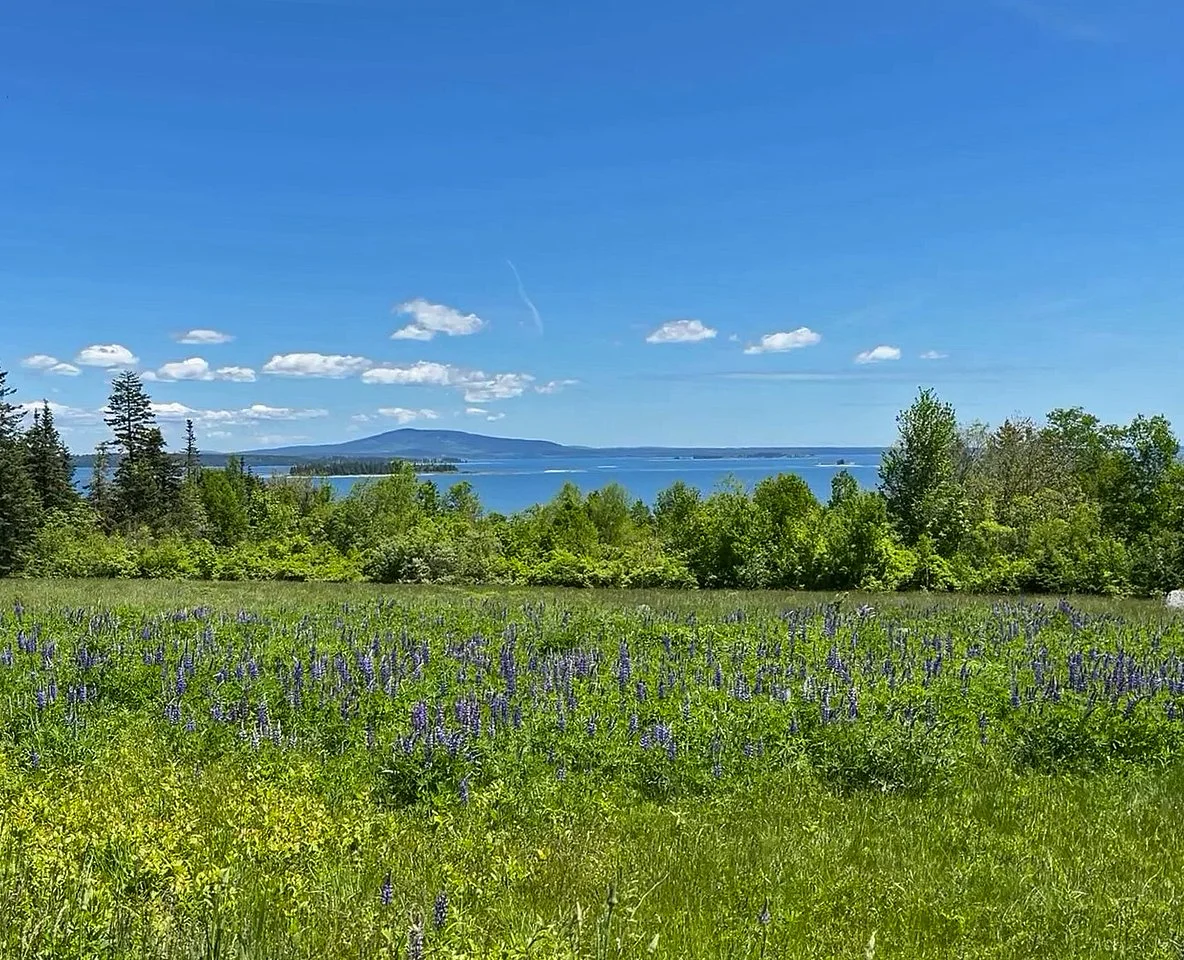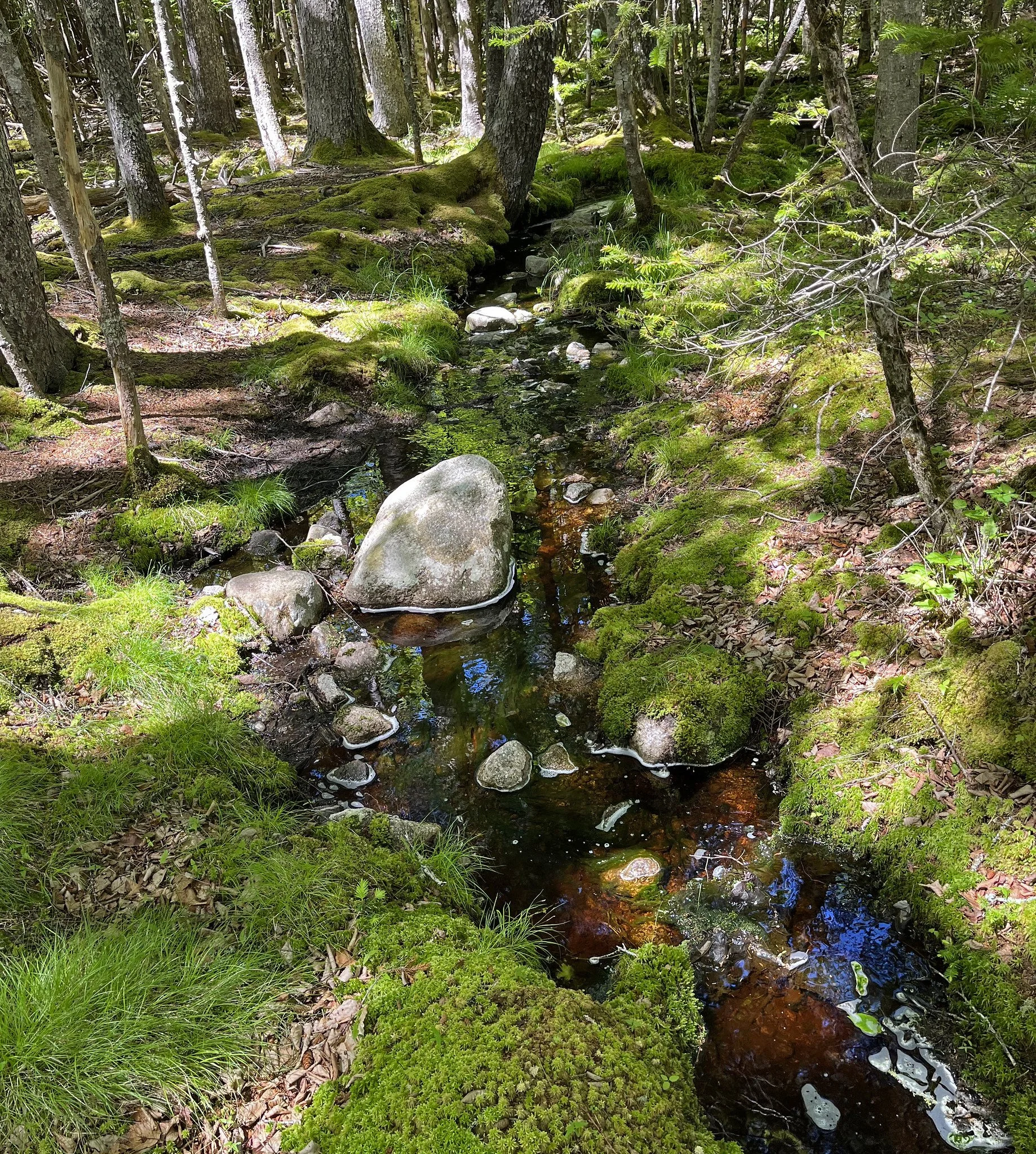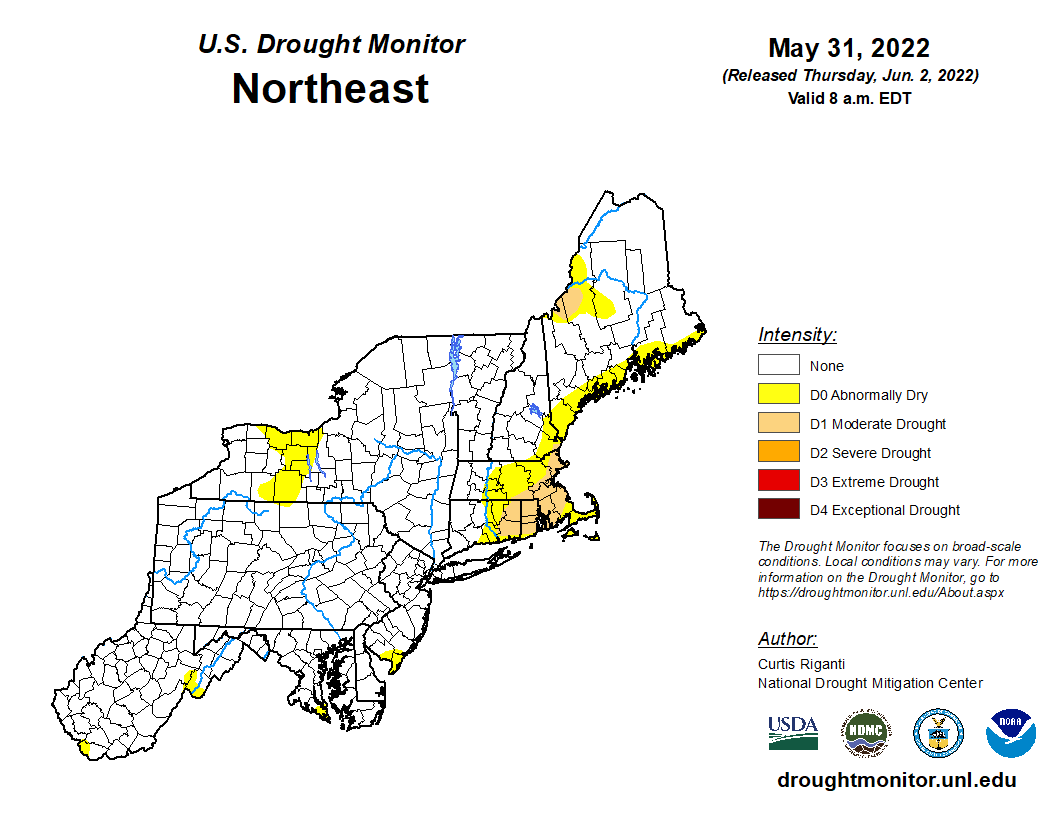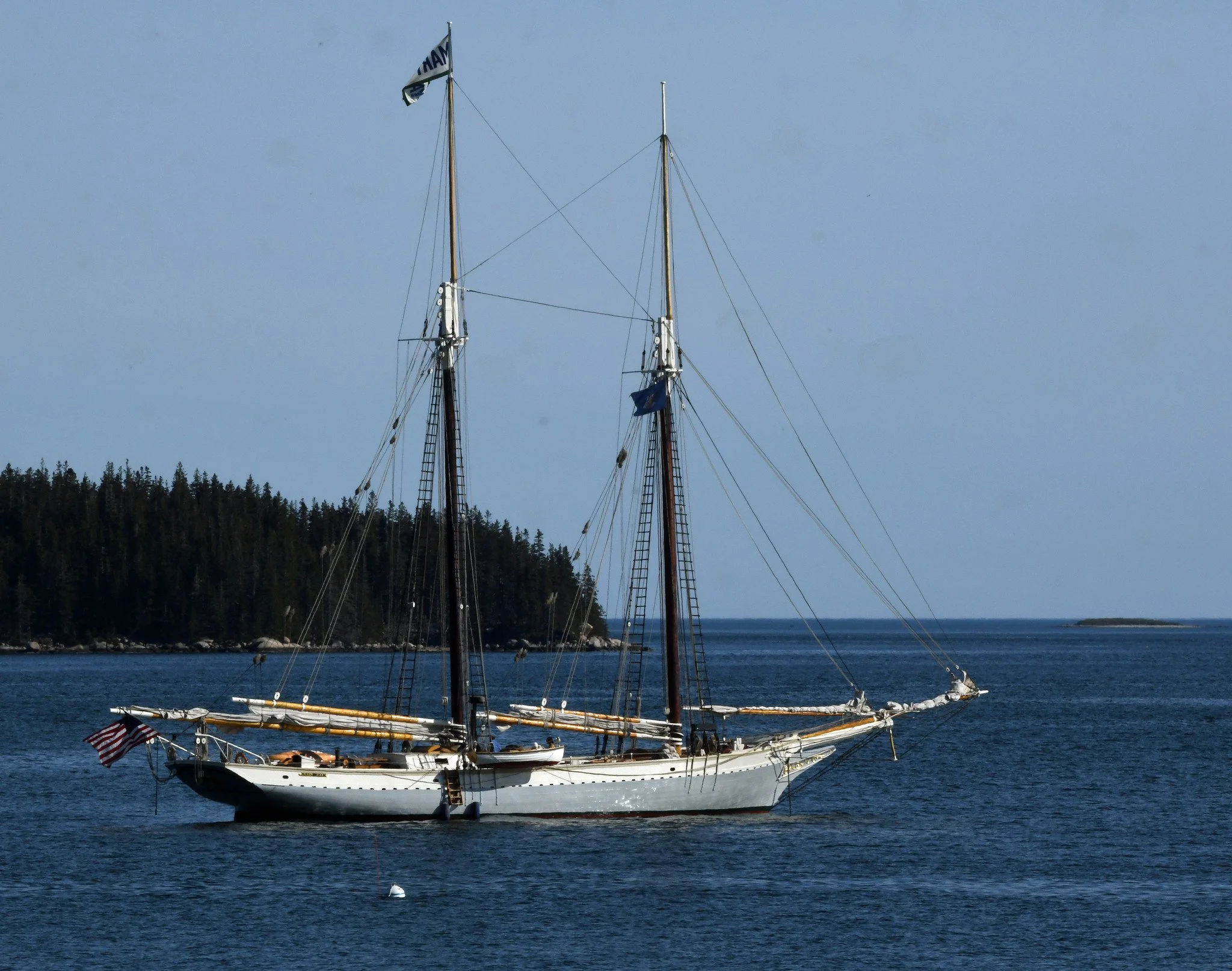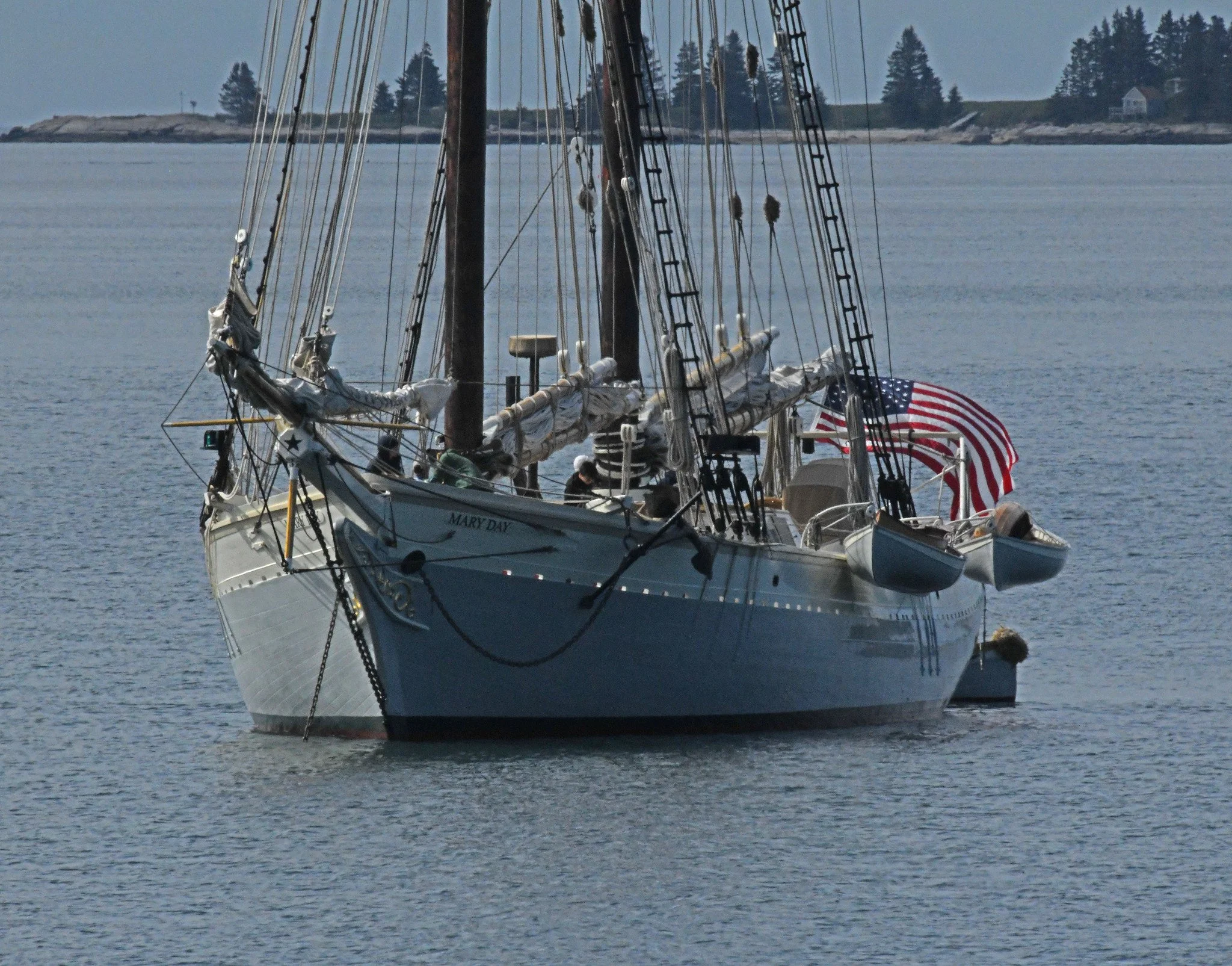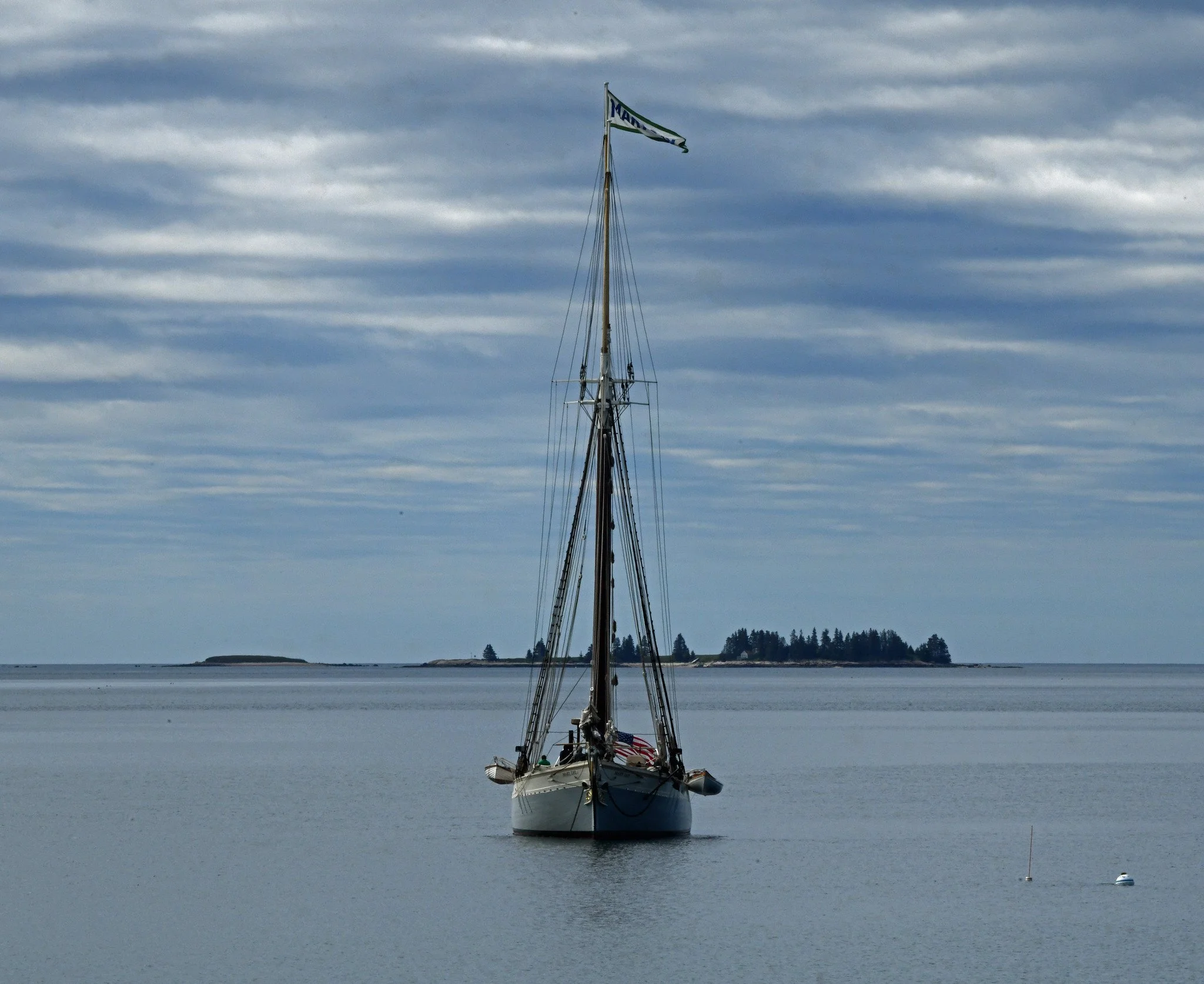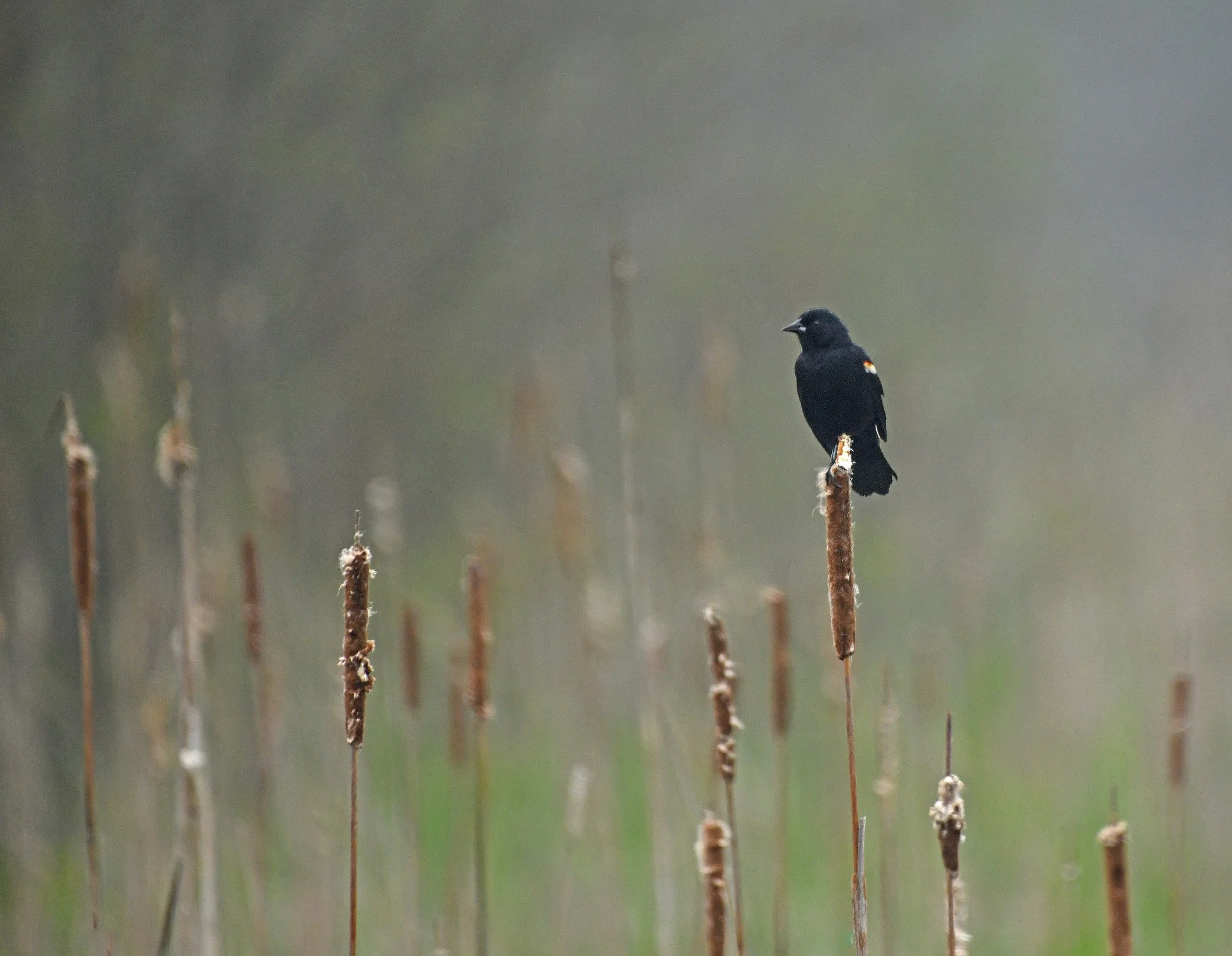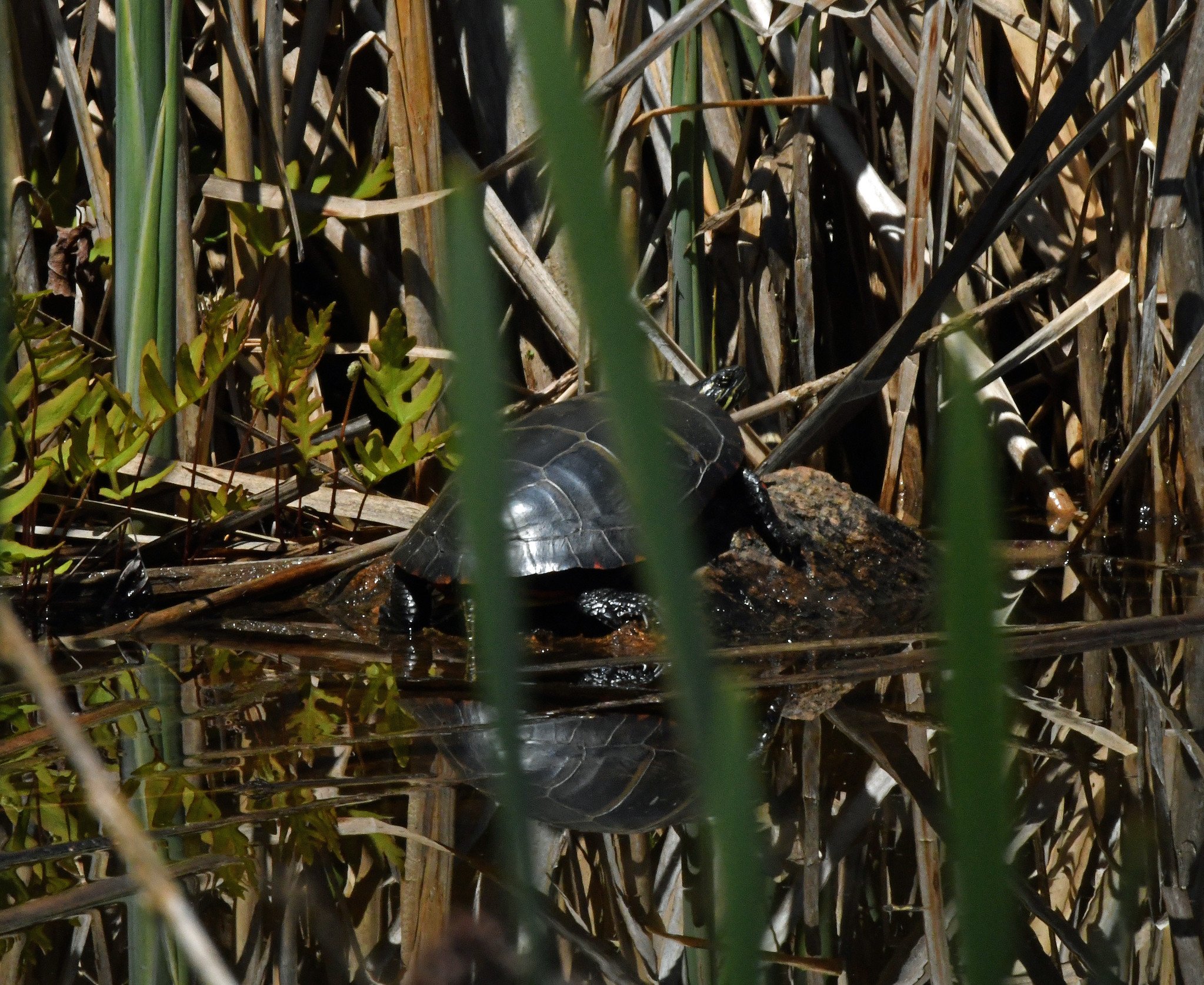The summer lobster fishing season will be opening later this month. Tidy lobster traps filled with gear and newly painted lobster trap buoys were on the Town Dock Sunday, ready to be transported to their fishing vessel.
In the summer, lobsters migrate into “inshore” State waters (within three miles of the coast) to molt and grow larger shells. The peak inshore lobster fishing season usually starts in late June and continues until sometime in November or December, depending on circumstances.
In the winter, the tasty crustaceans migrate “offshore” into deeper, federal waters that are defined as three to 200 miles from the coast. The lobsters grow into their new shells out there or are harvested by “offshore” fishermen, male and female. (Images taken in Brooklin, Maine, on June 5, 2022.)












